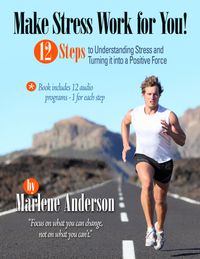Listen to this episode of the Focus with Marlene Podcast:
Get caught up with all episodes in the Developing a New Focus series.
This is part 4 in my series, “Focus on Building Confidence.”
Part 1: Focus on What You Can Do, Instead of What You Can’t
Part 2: Why Your Focus Matters
Part 3: Are You Reaching Your Goals?
Last week you assessed how you would like to live the rest of your life – your passions and aspirations, and what would make you happy.
You identified the times when you completed a goal or objective and what you did to make that happen.
You also identified times when you didn’t succeed, and what kept you from achieving. Perhaps it was time management or a goal you didn’t thoroughly think through because you were unaware of the magnitude of obstacles you would have to overcome.
When you define what is important and how you want to live, you can find ways to make that happen.
Discover unhelpful patterns
This FOCUS exercise will help you evaluate what you do every day.
For one week, keep a record of what you do, from the time you get up to the time you go to bed. Don’t assess at first, just keep a record.
At the end of the week, go back and evaluate.
Look for patterns that aren’t helping you. For example, you play video games before fixing dinner, or you call someone instead of doing housework. Are these activities unconsciously keeping you from completing tasks you don’t enjoy doing but need to be done?
Over time, we create habits of avoidance and making excuses. How many necessary jobs and chores have you put off for tomorrow because you don’t enjoy doing them?
Until we can honestly appraise what we do and don’t do every day, we will find it difficult to make the goal that we want to complete.
Reduce the stress in your life
As our lives become more chaotic, we become more and more stressed. We stop focusing on what needs to be done or how to maximize our time.
We also add to our stress levels by how we interpret and replay what is happening. Our brain responds to words we continually focus on. Without realizing it, we are constantly streaming some kind of statements all day long. A lot of those statements are loaded with words of contention or resentment or failures, and the body immediately gears up in some way to respond to them.
Taking time-outs during the day can help reduce tension, relax the muscles, and return our focus to one that is productive.
Use relaxation to your advantage
 Earlier in my career, I studied the brain-body connection and ways to use relaxation and visualization to our advantage. It prompted me to record a CD, first for Kaiser Permanente (who I was working with at the time), and then later, as an ebook/audio MP3 for my readers:
Earlier in my career, I studied the brain-body connection and ways to use relaxation and visualization to our advantage. It prompted me to record a CD, first for Kaiser Permanente (who I was working with at the time), and then later, as an ebook/audio MP3 for my readers:
Make Stress Work for You: 12 Steps to Understanding Stress and Turning it Into a Positive Force
It is difficult to learn how to relax on our own, and we usually try to “make” it happen instead of “allowing” it to happen.
The music that accompanies the script was composed by a good friend, Ron Jones, and recorded in his studio. The MP3 is both relaxing and instructive. As you listen and follow the instructions, you’ll discover where in your body you hold your tension and you’ll learn how to release tension.
A few minutes a day can do wonders.
Here is a summary of what you will get from my recording. Because you only have to listen, you can do a quick relaxation during the day in the privacy of your home or workspace.
Relaxation Exercise
DO NOT DO THIS WHILE DRIVING!
Once a day, or whenever possible, find a quiet time and space away from family or work, turn off your cell phone, and seat yourself in a comfortable chair, feet on the floor, hands in your lap.

Hang a DO NOT DISTURB sign on the door. While this exercise can be done sitting up or lying down, it is more productive when sitting. When lying down, we often fall asleep.
One of the key elements of this exercise is breathing – breathing that is slow and even and originates in the diaphragm.
Breathe in through the nose, hold a second, and then slowly release the air through your mouth. You can put your hand on your stomach as you breathe in and out to see if you are breathing correctly. Remember, each breath during this exercise is done slowly and evenly.
Before you continue with the relaxation of your body, you may want to practice this slow, even breathing for a while. Practice breathing like this until it becomes normal and natural. You can take one-minute breaks from work and focus on breathing in and out.
The next phase of this exercise is to progressively relax the different parts of your body. You are seated comfortably in your chair, and you can close your eyes.
I like to start with the head and work my way down. The process goes like this: tighten the muscles, feel the tension, breathe into that spot and as you release the air, release the tension.
Begin with your head. Tighten the muscles around the eyes and forehead. Feel the tension. Take a deep calming breath, and as you let the air out, relax all the tense muscles. Continue down the face, tensing the jaw and cheek muscles, taking a breath, and then releasing the tension with the air.
Continue this relaxation sequence of “tense, breathe, and relax” for all the muscle groups in your neck, shoulders, back, arms and fingers, pelvic area, hips, legs, and feet.
As you do this, add the following phrases:
- “Letting go”
- “I am relaxing more and more”
- “I am relaxing deeper and deeper”
- “All my tension is melting away”
Use different phrases as you go through the relaxation exercise.
By pairing the tensing of muscles and relaxing breathing with words that tell your brain you are letting go of tension and stress, you are associating the words or phrases with the actions of the relaxation process.
When you have relaxed all the muscle groups in your body, take a moment and focus on relaxing your internal organs.
Before you get up and resume your activities, take a moment after opening your eyes to let your body energize again.
When you have done this exercise for a while, you will be able to relax your body anytime, anywhere by simply taking some slow, deep, even breaths, focusing on the areas where you are holding your tension, and telling yourself to let go. After a while, you will notice how quickly tension can drain away.
Order the MP3 of Make Stress Work for You.

